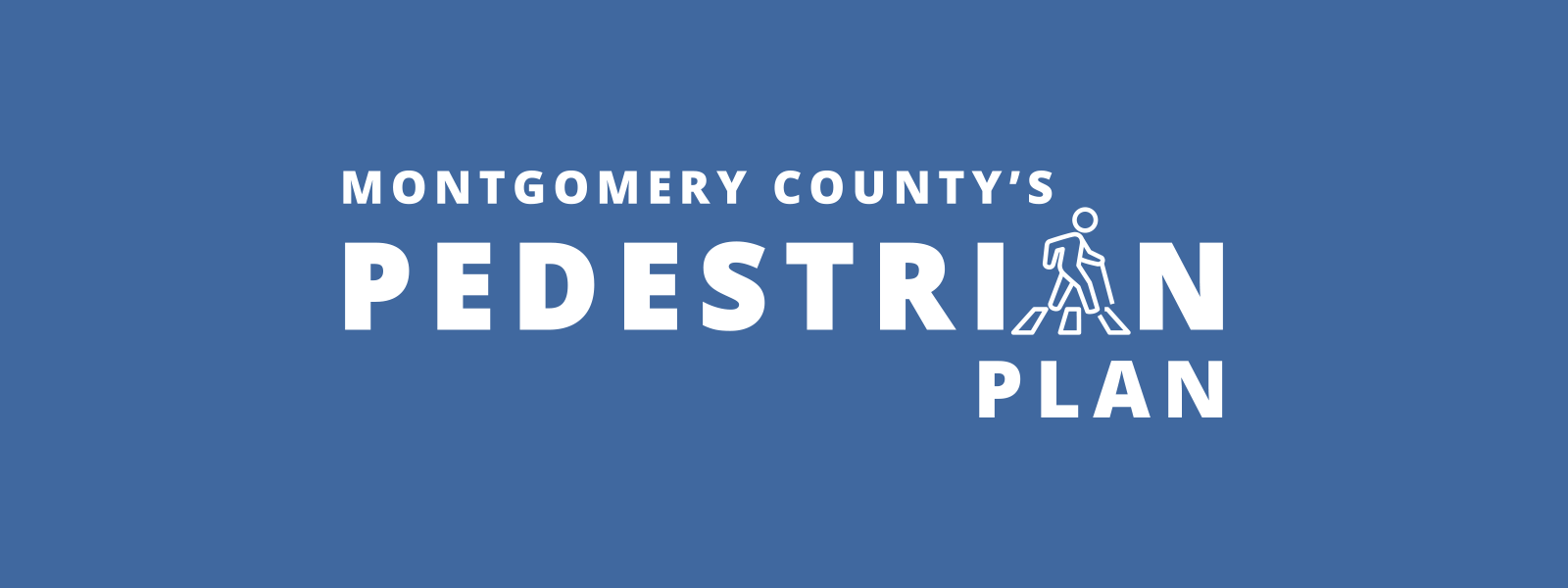
Analysis finds many of the future stations in Montgomery County lack comfortable pedestrian access
Silver Spring, MD – The Montgomery County Planning Department, part of The Maryland-National Capital Park and Planning Commission, recently released the Purple Line Pedestrian Connectivity Report, which analyzes pedestrian connections to future Purple Line stations in Montgomery County. The Purple Line light rail, which is scheduled to be completed in 2023, will rely heavily on a pedestrian ridership base, but the report found many of the station sites lack comfortable pedestrian access, especially stations located in areas designed for cars. The analysis used a methodology developed for the Pedestrian Master Plan (currently underway) called the Pedestrian Level of Comfort (PLOC) approach. This approach considers the characteristics of each pedestrian pathway and crossing segment (using such factors as pathway width, speed limit, and crosswalk type) and assigns it a score on a four-point scale, ranging from “very comfortable” to “unacceptable”.
Key Findings
- Pedestrian connectivity along the International Corridor will be low when the Purple Line opens (without additional improvements), with pedestrian connectivity ranging between 20 and 49 percent. The International Corridor extends from Manchester Place Station east to Takoma-Langley Station and is characterized by a majority-Hispanic population and the presence of international restaurants and shops.
- Implementing the report’s recommendations would increase the pedestrian connectivity of every Purple Line station serving Montgomery County. Stations with very low connectivity at the Purple Line opening, such as Piney Branch Road and Takoma-Langley, would see significantly improved connectivity, achieving a connectivity level similar to the average for all Montgomery County stations.
- For many stations, the short-term and lower-cost recommendations alone would yield substantial pedestrian connectivity increases. Certain other stations, such as Lyttonsville and Woodside, demonstrated substantially greater pedestrian connectivity only with the inclusion of medium-to-long term recommendations. The two stations with the lowest pedestrian connectivity at Purple Line opening, Piney Branch Road and Takoma-Langley Stations, would benefit greatly from both short- and medium-to-long-term recommendations to achieve a pedestrian connectivity increase.
- High pedestrian connectivity (above 80 percent) could be reached at most stations if all recommendations are implemented. However, some stations, such as Long Branch and Piney Branch Road, will require private redevelopment in order to achieve higher pedestrian connectivity.
- This report’s recommendations would improve pedestrian connectivity for the eight stations located in Equity Emphasis Areas (EEA), with substantial improvements for those three EEA stations which have the lowest overall connectivity at Purple Line opening.
- The recommendation that stands out as the quickest and least costly to implement is reducing the posted speed limit to 25 mph within the vicinity of all Purple Line stations. This should be the rule rather than the exception and is worth exploring as a general policy.
This report will be presented to the Montgomery County Planning Board at its July 2 meeting. Learn more about the Planning Department’s plan to address pedestrian connectivity in the county.
For questions about the report, please contact project managers Lauren Pepe via email or Juan Castro via email.
About the Pedestrian Master Plan
The Pedestrian Master Plan, now being developed by Montgomery Planning’s Functional Planning and Policy Division, will identify best practices, analyze information from people who walk and roll, and examine ways of improving the pedestrian experience using several analytical tools, including a pedestrian comfort analysis and a crash analysis. The resulting Pedestrian Master Plan will provide county leaders and agencies, such as Montgomery County Department of Transportation and the Department of Permitting Services, recommendations and guidance related to:
- Prioritization of pedestrian pathways and safe crossings.
- Pedestrian-supportive policies and operational practices.
- Pedestrian design toolkit of treatments and operational approaches to traffic calming, signal timing, accessibility features, and more.
Recommendations will support making walking universally accessible to county residents of all ages and abilities and will consider walking (including with a cane, a walker, or a stroller), and rolling (with a wheelchair or mobility scooter).
The Pedestrian Master Plan will complement the 2018 Bicycle Master Plan, Thrive Montgomery 2050 planning currently underway and other Vision Zero-related efforts to make streets safer and more accessible, including the 2019 Veirs Mill Corridor Master Plan and 2019 Aspen Hill Vision Zero Study.